
This goes back to May 2019 at the Sculpture Workshops. I would normally blog when the piece is finished, but things are on hold at present.
I discovered Italian block (thanks Eden) and made the beeswax model (above) for the main part of a commissioned piece remembering the heroes at Dunkirk and La Panne. The design is based on a torpedoed submarine in the Imperial War Museum in London.


I made a clay model and then took a beeswax cast from the clay. The top photo is the wax cast which has been sprued (adding runners for the metal, risers for escaping air and a funnel for pouring in the metal)
The italian block is made by making a flask of chicken wire around the wax, which is stood in pouring position in the flask.

This is draped in hessian soaked in plaster to form a plaster flask surrounding the wax,

The flask is then filled with the plaster mixture to create a solid block around the wax and dried.

The block mould is then heated slowly in a kiln overnight to melt out the wax and fire the plaster mix.

The mould is ready to be poured whilst still hot, so that it doesn’t fracture with the shock of the molten metal. This piece was poured at the end of May.
This traditional method can be used for bronze, silver and lower melt metals, but not for iron.
The Sculpture Workshop is reviewing its safety procedures and stopped all Italian block firing in summer 2019, pending the outcome of this review. Plans are in hand to remodel the metal workshops and I hope that when this happens I can explore Italian block further. I really like the method as offering great scope for design whilst being pretty sustainable and low tech.

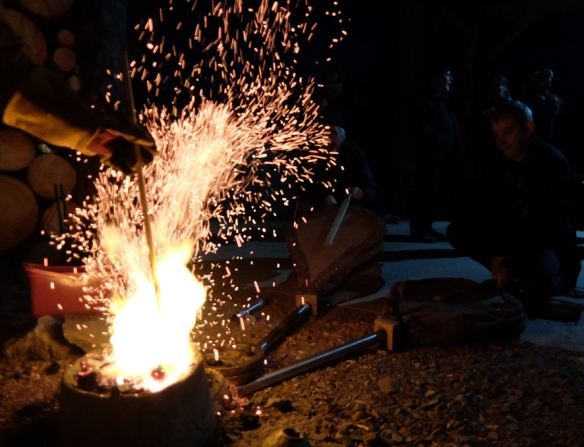
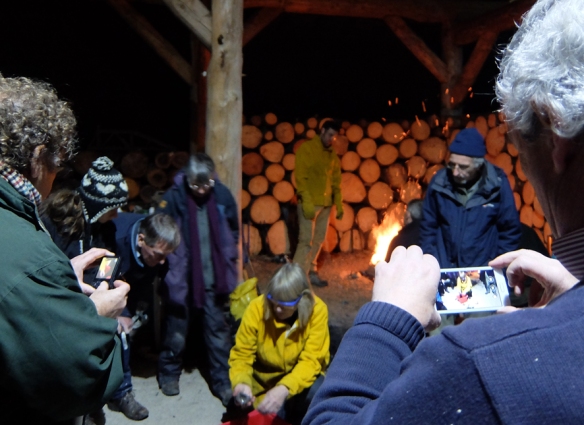
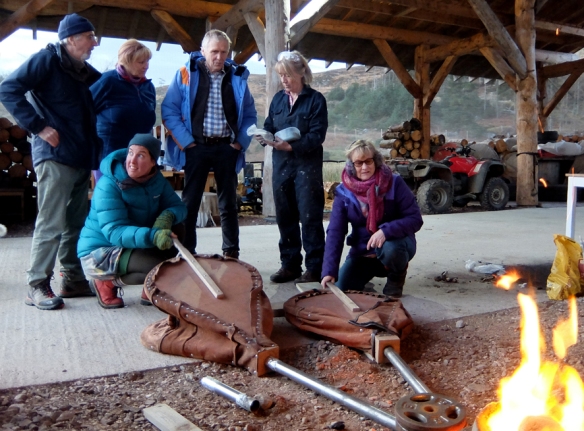
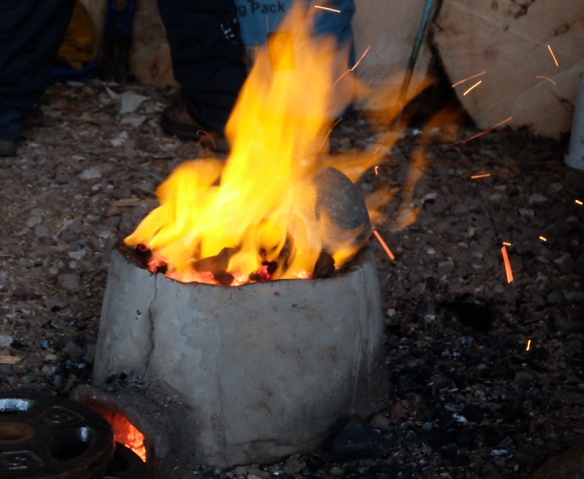 We had some local charcoal courtesy of Chris (although most of it came from the Chinese wholesalers in Dundee). Heather Fulton took loads of photos, some of which I’m using here.
We had some local charcoal courtesy of Chris (although most of it came from the Chinese wholesalers in Dundee). Heather Fulton took loads of photos, some of which I’m using here.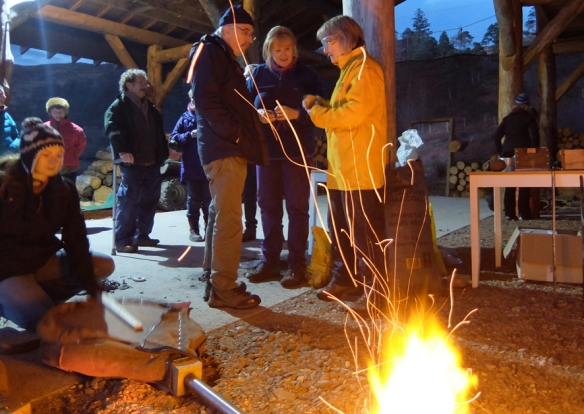

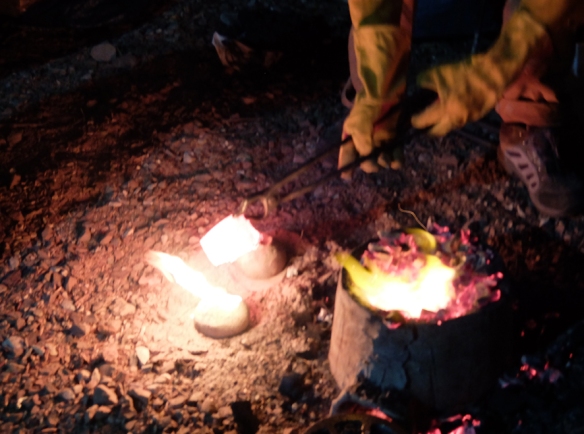
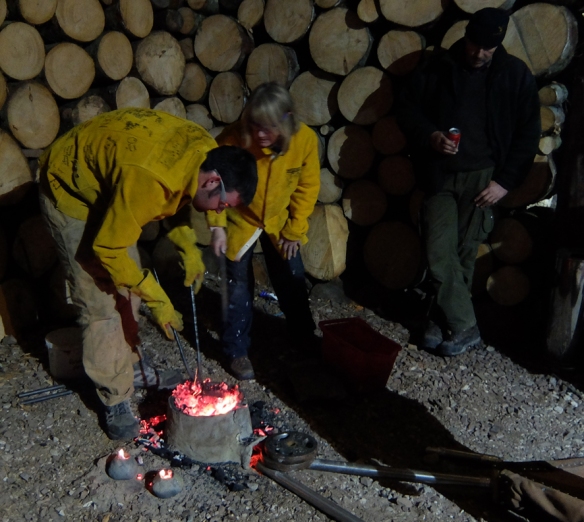

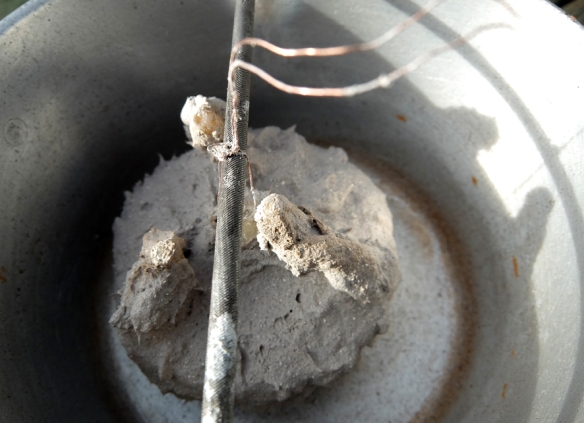
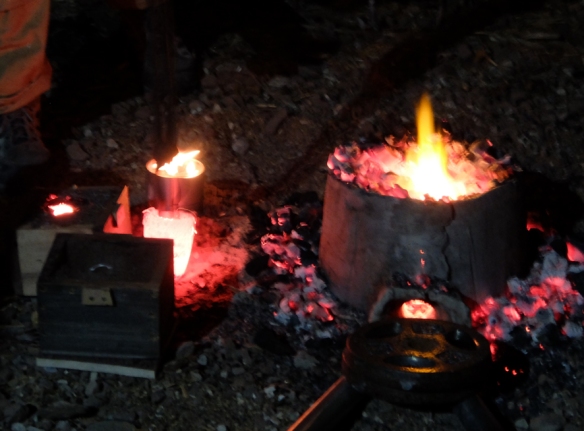


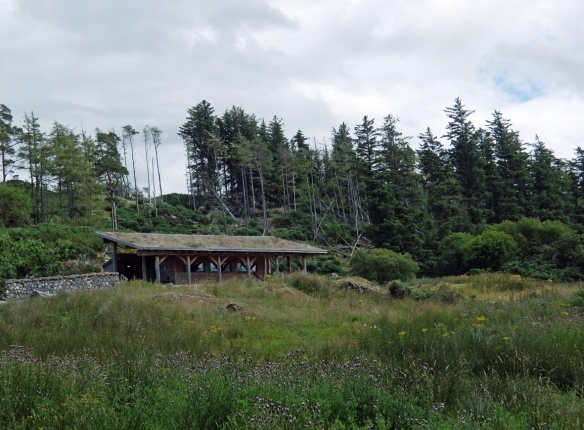
 Once the wax models have been made and sprued they are then dipped in a slurry mix of clay (this time from Kingsbarns) sand (Cellardyke beach) and fibre (horse poo from near Kilrenny). There are two mixes, one is fine and the early coats are done in this and the other is coarser to build up the outer layers. Each layer has to dry before the next layer is added so it takes several days to build up the mould.
Once the wax models have been made and sprued they are then dipped in a slurry mix of clay (this time from Kingsbarns) sand (Cellardyke beach) and fibre (horse poo from near Kilrenny). There are two mixes, one is fine and the early coats are done in this and the other is coarser to build up the outer layers. Each layer has to dry before the next layer is added so it takes several days to build up the mould.





 I make my models using beeswax from a beekeeper who lives near St Andrews. She and her bees make lovely wax that smells delicious and is just right for making models.
I make my models using beeswax from a beekeeper who lives near St Andrews. She and her bees make lovely wax that smells delicious and is just right for making models. These then need to have pouring stalks added (sprues). They are then ready to be dipped in the clay mix to build up the mould.
These then need to have pouring stalks added (sprues). They are then ready to be dipped in the clay mix to build up the mould.













